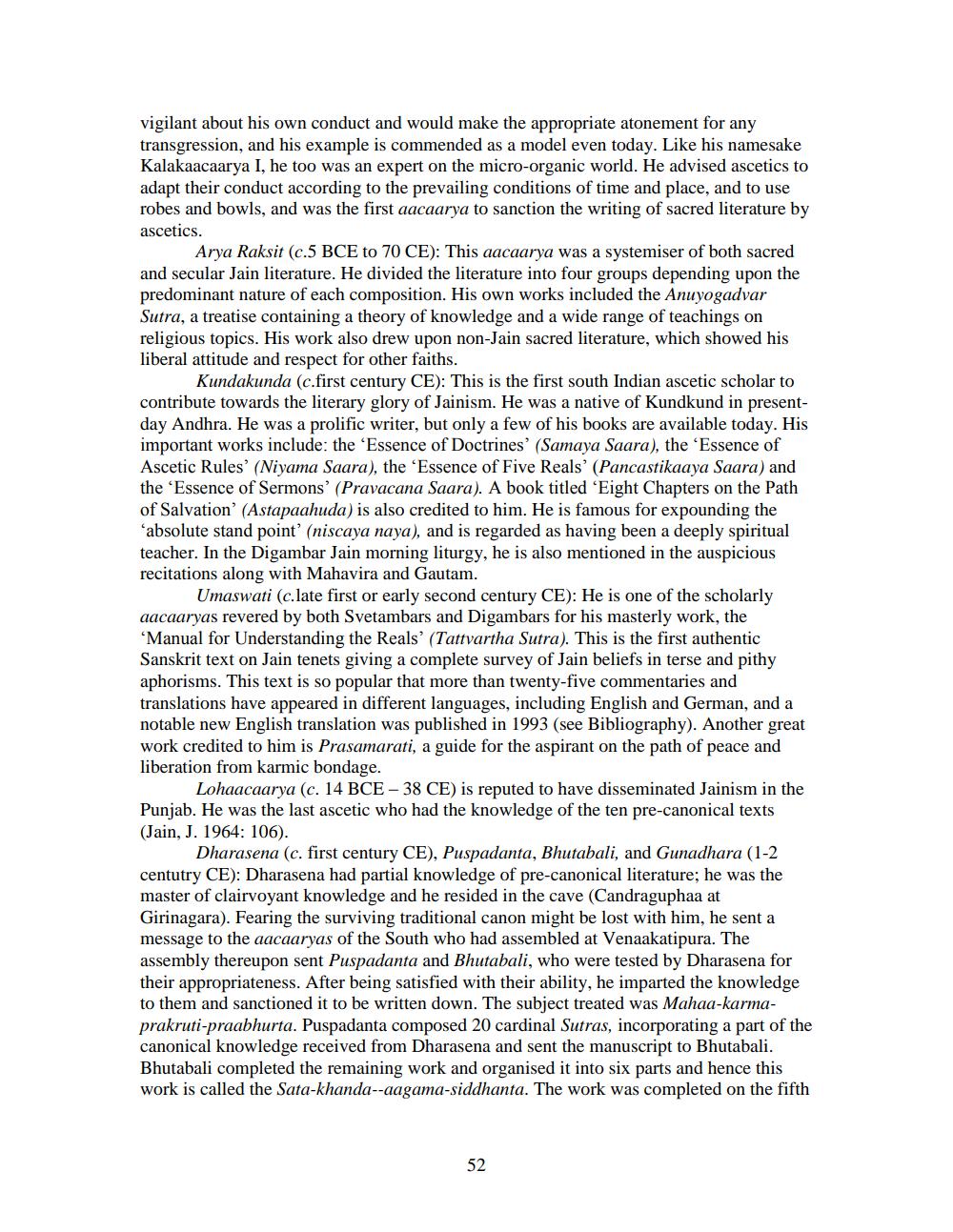________________
vigilant about his own conduct and would make the appropriate atonement for any transgression, and his example is commended as a model even today. Like his namesake Kalakaacaarya I, he too was an expert on the micro-organic world. He advised ascetics to adapt their conduct according to the prevailing conditions of time and place, and to use robes and bowls, and was the first aacaarya to sanction the writing of sacred literature by ascetics.
Arya Raksit (c.5 BCE to 70 CE): This aacaarya was a systemiser of both sacred and secular Jain literature. He divided the literature into four groups depending upon the predominant nature of each composition. His own works included the Anuyogadvar Sutra, a treatise containing a theory of knowledge and a wide range of teachings on religious topics. His work also drew upon non-Jain sacred literature, which showed his liberal attitude and respect for other faiths.
Kundakunda (c.first century CE): This is the first south Indian ascetic scholar to contribute towards the literary glory of Jainism. He was a native of Kundkund in presentday Andhra. He was a prolific writer, but only a few of his books are available today. His important works include: the 'Essence of Doctrines' (Samaya Saara), the 'Essence of Ascetic Rules' (Niyama Saara), the 'Essence of Five Reals' (Pancastikaaya Saara) and the Essence of Sermons' (Pravacana Saara). A book titled 'Eight Chapters on the Path of Salvation" (Astapaahuda) is also credited to him. He is famous for expounding the *absolute stand point' (niscaya naya), and is regarded as having been a deeply spiritual teacher. In the Digambar Jain moming liturgy, he is also mentioned in the auspicious recitations along with Mahavira and Gautam.
Umaswati (c.late first or early second century CE): He is one of the scholarly aacaaryas revered by both Svetambars and Digambars for his masterly work, the 'Manual for Understanding the Reals' (Tattvartha Sutra). This is the first authentic Sanskrit text on Jain tenets giving a complete survey of Jain beliefs in terse and pithy aphorisms. This text is so popular that more than twenty-five commentaries and translations have appeared in different languages, including English and German, and a notable new English translation was published in 1993 (see Bibliography). Another great work credited to him is Prasamarati, a guide for the aspirant on the path of peace and liberation from karmic bondage.
Lohaacaarya (c. 14 BCE - 38 CE) is reputed to have disseminated Jainism in the Punjab. He was the last ascetic who had the knowledge of the ten pre-canonical texts (Jain, J. 1964: 106).
Dharasena (c. first century CE), Puspadanta, Bhutabali, and Gunadhara (1-2 centutry CE): Dharasena had partial knowledge of pre-canonical literature; he was the master of clairvoyant knowledge and he resided in the cave (Candraguphaa at Girinagara). Fearing the surviving traditional canon might be lost with him, he sent a message to the aacaaryas of the South who had assembled at Venaakatipura. The assembly thereupon sent Puspadanta and Bhutabali, who were tested by Dharasena for their appropriateness. After being satisfied with their ability, he imparted the knowledge to them and sanctioned it to be written down. The subject treated was Mahaa-karmaprakruti-praabhurta. Puspadanta composed 20 cardinal Sutras, incorporating a part of the canonical knowledge received from Dharasena and sent the manuscript to Bhutabali. Bhutabali completed the remaining work and organised it into six parts and hence this work is called the Sata-khanda--aagama-siddhanta. The work was completed on the fifth
52




